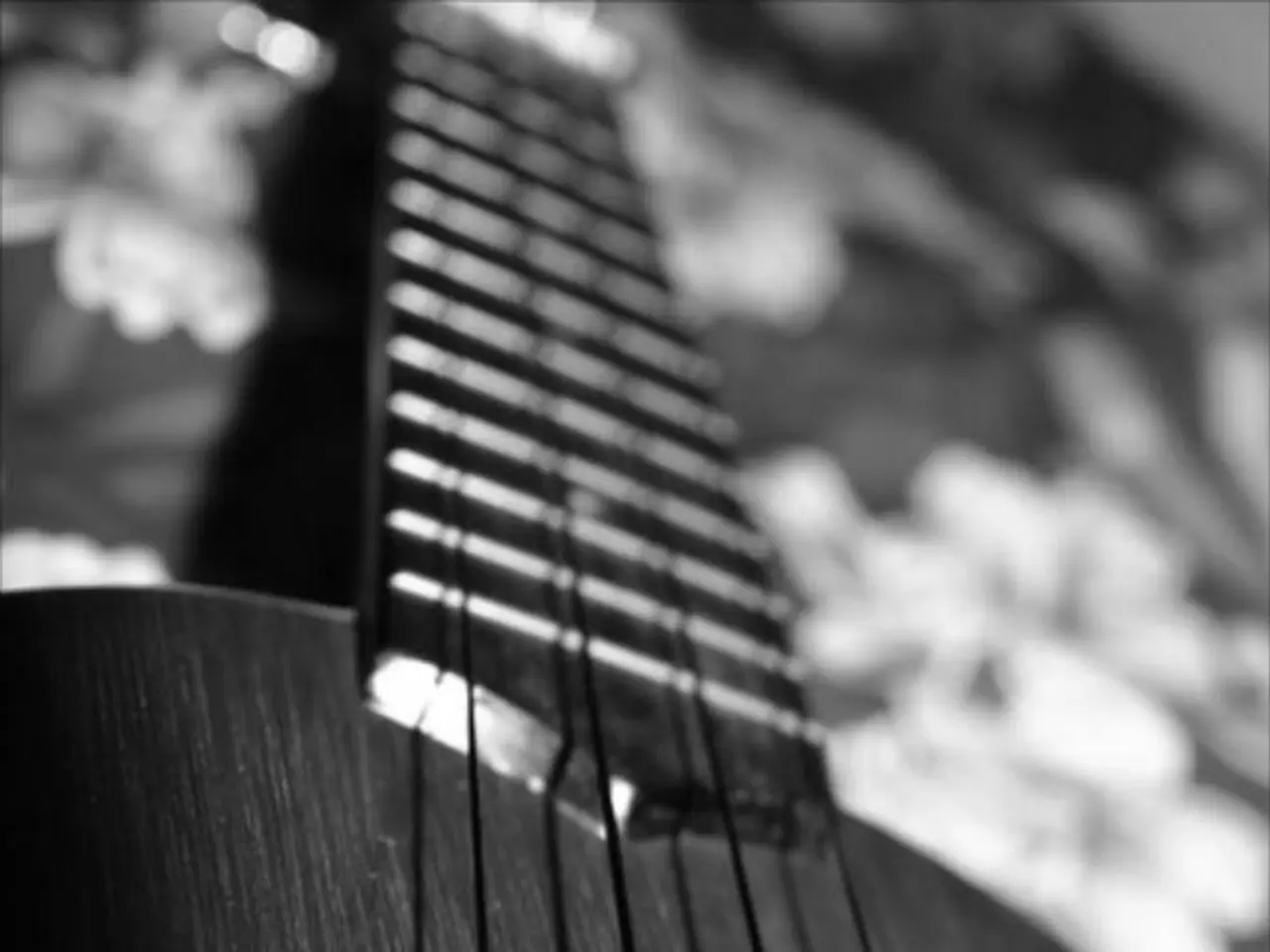The impact of Reverb on the final mix of a song
In the realm of music production, reverb plays a crucial role in creating a rich and immersive listening experience. By understanding its various aspects and applying it thoughtfully, producers can transform dry tracks into dynamic, spacious, and emotionally resonant pieces.
One key principle is matching reverb length to the track's tempo and energy. This ensures a more natural and appropriate ambiance, preventing low-end rumble and high-frequency harshness that can muddy the mix. Not EQing the reverb can lead to such issues, so it's essential to EQ the reverb return to keep the mix tight and professional.
There are several types of reverb, each with its unique character and suitable for different instruments and genres. For instance, spring reverb, with its metallic, bouncy, and slightly vintage quality, is best for guitars, especially electric, retro or lo-fi tracks. On the other hand, convolution reverb is ideal for ultra-realistic recreations of real-world spaces, making it a popular choice for sound design, cinematic projects, or highly realistic productions.
Room reverb, subtle and natural, is perfect for realism and acoustic instruments, while hall reverb, lush and spacious, is ideal for vocals and orchestral sounds, simulating large performance spaces. Plate reverb, smooth and bright, is often used on vocals and snares, and chamber reverb, from a large reflective room, works well on vocals, guitar, and orchestral instruments.
Using multiple reverbs can add dimension by placing some instruments in a more foreground or background space. However, they must sound cohesive and fit the song’s groove. For drums, bright reverbs with short decays keep them crisp and punchy, while duller reverbs can soften short-percussive sounds.
Common mistakes include overusing reverb, which can drown important elements, and using mismatched reverbs that don't fit the song’s tempo or style. To avoid these pitfalls, producers should start with dry tracks and add reverb sparingly where it enhances sound, avoiding a muddy mix.
Blending reverb carefully is important, as a little reverb goes a long way and too much can overpower the mix. Reverb helps create a sense of space, distance, and emotion in a track, whether that's the intimate feel of a small room or the grand sweep of a concert hall.
Automating reverb for dynamic changes can keep the mix lively and emotional during different parts of the song. Using Aux/Send Channels instead of Inserts for reverb can save CPU, keep the mix cleaner, and let multiple sounds share the same "space" more naturally.
Without reverb, mixes can sound dry, flat, and unnatural. With the right amount of reverb, every element in your song can sit more comfortably in the mix, blend more smoothly with other sounds, and give your listeners a richer, more immersive experience. Setting a Pre-Delay separates the dry sound from the start of the reverb tail, keeping the original sound clear and punchy while still feeling spacious.
In summary, effective reverb use involves thoughtful selection of type, decay, pre-delay, and routing via sends, avoiding overuse, and matching reverb character to instrument and musical context. Reverb isn't just an optional extra, it's a key part of making your tracks sound natural, professional, and full of life. Ignoring the groove and timing when setting reverb levels can blur the rhythm of a track, especially on drums and percussive elements.
Remember, reverb, short for reverberation, is the natural echo or reflection of sound as it bounces off surfaces in the real world. By harnessing this power in your music, you can transport listeners to a world of their own, immersing them in the music and creating an unforgettable listening experience.
Gadgets like smartphones, which are equipped with various music production applications, have made it easier for producers to experiment with reverb for creating immersive listening experiences. To ensure a harmonious cohesion with the other digital elements, one must carefully adjust the settings of these applications, considering factors such as reverb length, pre-delay, and type.
Reverb, being a significant contributor to the overall ambiance and emotion in a musical piece, is an essential aspect of technology that continues to evolve, offering new possibilities for sound design in diverse genres.




